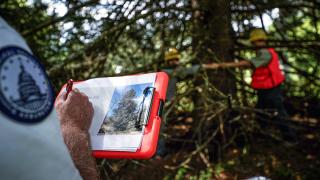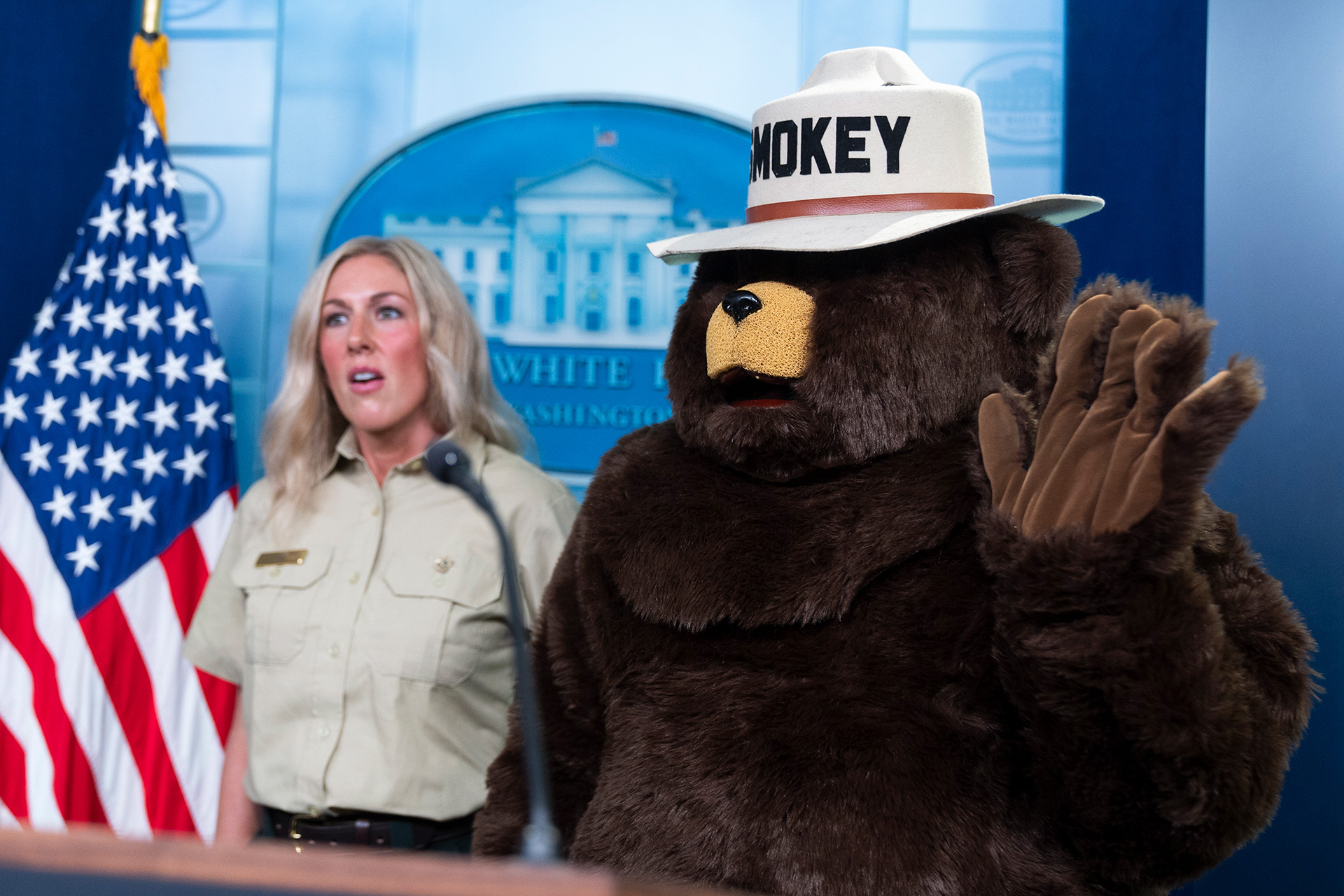Out of thousands of trees, only one gets selected and named the People’s Tree each year.
The Monongahela National Forest, however, has a special history with the U.S. Capitol Christmas Tree, as it was the first national forest selected to provide the People’s Tree in 1970. Six years later, the Monongahela was asked again to provide the nation’s Bicentennial People’s Tree in 1976.
Forty-seven years later, the honor is brought back to the deep woods and high altitudes of West Virginia.

The Monongahela is one of four Forests who will join the ranks of providing at least three trees in the program’s 53-year history, alongside Green Mountain National Forest in Vermont, Pisgah National Forest in North Carolina, and the Ottawa National Forest in Michigan.
Earlier this month, the director of the U.S. Capitol grounds from the Architect of the Capitol’s office spent three days with Monongahela forest personnel visiting various sites across the forest in pursuit of finding the perfect tree.

The staff’s search to find a tree worthy of adorning the west lawn of the U.S. Capitol this holiday season included the following criteria:
-
Must be between 60-80 feet
-
Must be full, conical in shape, and present well from all angles
-
Be in a location accessible to vehicles
Two species met the requirements and were the focus of the search – the native red spruce and the introduced Norway spruce – both evergreens that dominate most of the Monongahela’s higher altitudes.
“It’s always a difficult process selecting the perfect tree because we’re looking for a tall, full, and accessible tree across nearly a million acres of beautiful West Virginia’s forest land,” said Jim Kaufmann, Director of Capitol Grounds and Arboretum at the Architect of the Capitol.

The culmination for this final selection took months of preparation as forest personnel and volunteers traversed over thousands of acres of forest land photographing, annotating location coordinates, and dictating height measurements for hundreds of trees.
After careful consideration, the Monongahela’s third People’s Tree was selected – a 63-foot Norway spruce from the Greenbrier Ranger District, which is even more fitting that the 1970 tree was also a Norway spruce from the same ranger district.
“Many employees have contributed to searching for tree candidates across our wild and wonderful forest,” said Ray Nelling, a forester on the Monongahela National Forest. “We’ve shown some great trees in beautiful locations across the Monongahela and we’re excited to bring this Norway spruce to Washington this holiday season.”

The non-native Norway spruce was first introduced to West Virginia in the early 1920s by Forest Service personnel and then resurged in the 1930s when Civilian Conservation Corps planted the species in great quantities across the landscape.
Once the tree is harvested in the fall, it will be transported by a large truck and accompany an interpretive display that will visit many towns throughout West Virginia before arriving at the U.S. Capitol.
“Following the selection, our talented team at the Architect of the Capitol’s office starts working its magic with lights and ornaments once the tree arrives safely in Washington D.C.,” said Kaufmann.






